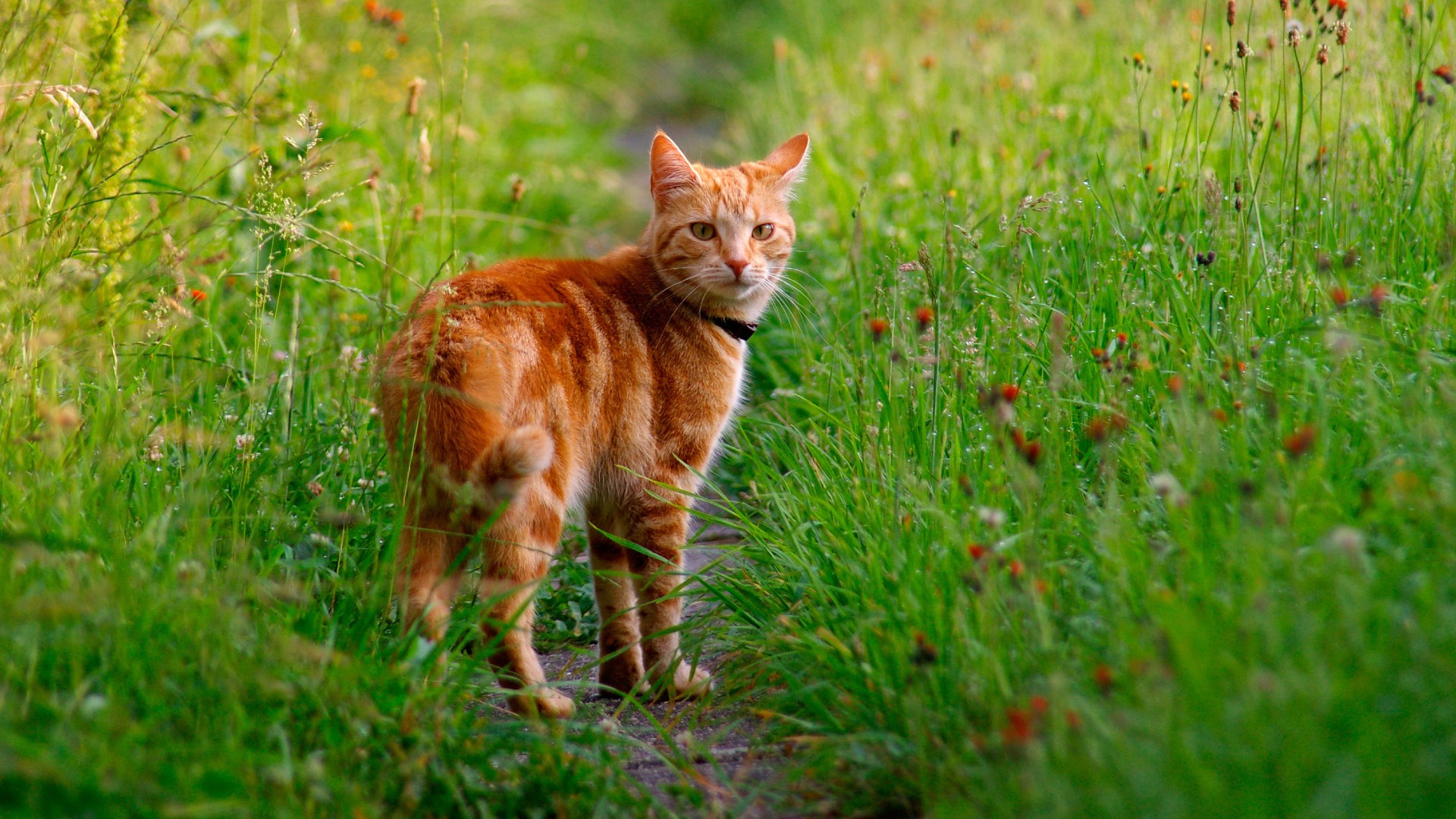Cat road safety: Tips for keeping outdoor cats safe
Dangerous roads are a cat owner’s greatest fear, but these cat road safety tips can keep your kitty out of harm’s way

Cat road safety is a topic that's high on the priority list for most pet parents who have an outdoor-dwelling feline friend, and it's not hard to see why.
There's a lot of debate around indoor vs outdoor cats and while there's no right or wrong answer, keeping cats indoors is often considered to be the best option because of the health and safety risks that life outdoors can bring.
Caring for outdoor cats can be more challenging than caring for cats kept indoors as cats who spend a lot of time in nature's backyard are subject to the ever-present threat of being harmed on the road.
Despite this, there are ways that every owner can minimize their cat’s risk of getting hurt by cars, including improving night time visibility, and cat-proofing their garden. Read on to find out more...
Have your cat neutered
The further your cat wanders, the more likely they are to cross roads. If your cat travels miles each day, they may be encountering dangers such as main roads and train tracks. The cats who statistically travel further are often young and unneutered, and are usually male.
Unneutered cats will often travel further from home in search of a mate, or to fight with other cats. This means they are likely to encounter more roads as they explore a wider area.
Many pet owners have questions about neutering, but it is a routine procedure with minimal complications. If you have any questions or concerns about the procedure, you can contact your vet to find out more or check out our guide to neutering your pet.
Create an evening routine
Although cats can see fairly well in the dark, humans can’t! Drivers find it more difficult to spot cats on the road in the dark, especially if the cat runs out at the last minute. Even if your cat has free rein of the great outdoors during the day, it’s advisable to keep them inside overnight.
Cats famously do whatever they please, whenever they please, so it might seem difficult to get them to come inside at night. Most cats enjoy a routine though, and are motivated by food. By feeding them at the same time in the evening every day, you form a consistent routine, and your cat will soon learn to associate that time of the day with food and come home before night.
If your cat does go outside at night, a reflective collar can make them more visible to road users.
Make sure they're microchipped
Sadly, no matter our best efforts, outdoor cats do sometimes get injured or killed on the road. This is why getting your cat microchipped is so important. If a kind stranger notices that your cat has been injured on the road and takes them to a nearby veterinary clinic, a microchip ensures that you will be reunited with your cat.
In instances of cats that are found deceased, the veterinary clinic will usually scan them for a microchip, allowing you to be informed about your cat’s condition, and receive closure rather than wonder about where they went.
Microchipping is quick, simple and cheap. It is well worth the investment for the peace of mind it brings.
Use a breakaway collar
For any cat, a breakaway collar is an essential. Whether you keep your cat indoors or outdoors, a breakaway collar can stop them from choking to death when caught on something and prevent injuries if they try to escape their collar.
For outdoor cats, who may climb over or through hedgerows, fences, sticks and other places where their collar may snag on something, a breakaway collar can be a lifesaver.
This is especially true of fences, hedgerows and borders by the road. If your cat gets caught at the last minute, they may not be able to move to safety when a vehicle comes. The snap-apart mechanism on a breakaway collar means your cat won’t get stuck in an unsafe position.
Consider keeping your cat indoors
The most surefire way to keep your cat safe from road injury and harm is to prevent them from being able to access the road. There are lots of different ways to do this, including keeping your cat indoors only, building a ‘catio’ or cat-proofing your yard so they cannot escape
For many owners, the effort involved in this is worth the peace of mind to know exactly where their cat is at any given time.
What to do if your cat is hit by a car
The first thing you will want to do if your cat has been hit by a car is to check that they are still alive.
A cat that has been injured may pass out, so even if they're not moving, you'll still want to feel for a heartbeat by placing two fingers on their chest (right behind the elbow). You can also place your palm in front of their nostrils to check if they're breathing.
If your cat is alive, you'll want to assess their injuries. Are they conscious? Bleeding? Do they have any obvious wounds or injuries? Keep in mind that even a cat that loves you and has been with you for many years may bite or act aggressively when injured, so always approach with care.
At this stage, you'll want to call your vet. They'll be able to offer advice over the phone as to how you can best keep your cat comfortable and how to stabilize them until you reach your nearest clinic.
Unlike with humans, who you never want to move after an accident, there are no paramedics or ambulances for our feline friends, so you're going to have to move them in order to get them the help they need.
To do this, wrap them gently in a towel or blanket and put them into either a box, carrier, or carry them on your lap in the car while someone else drives. It's always best to transport them on a flat surface to avoid aggravating any internal injuries.
Whether your cat is limping in a subtle way or they have a major injury, any indication your feline friend is wounded (whether from being hit by a car or something else entirely) warrants immediate veterinary attention.
Get the best advice, tips and top tech for your beloved Pets

After graduating from the University of East Anglia in 2021, Caitlin started her career in veterinary and pet care journalism at Vision Media, working as a staff writer at MRCVSOnline and regularly contributing to PetFocus Magazine. Armed with a lifelong adoration of cats and a passion for improving the standards of care for small pets, Caitlin took the leap into full-time freelancing in early 2023.
Having spent her career thus far writing content for veterinary clinics, covering veterinary congresses and publishing the latest developments in veterinary medicine. With her love for animals, and interest in all things veterinary, Caitlin is keen to educate on and advocate for the best possible standards of pet care.
When she’s not writing pet care articles, Caitlin enjoys spending time with her massive ginger cat named Jake, and rescue hamster named Coffee. She is also a keen poet, and loves petting every cat she sees when out and about.
